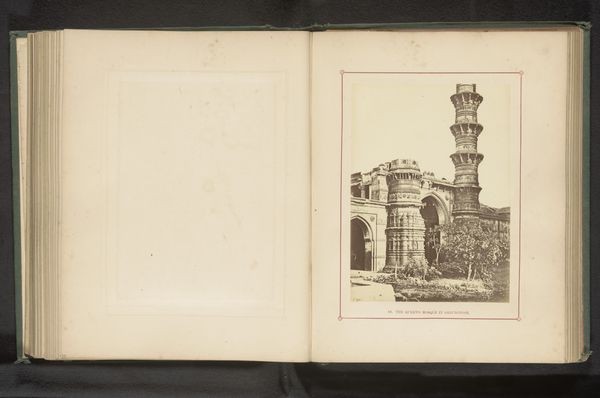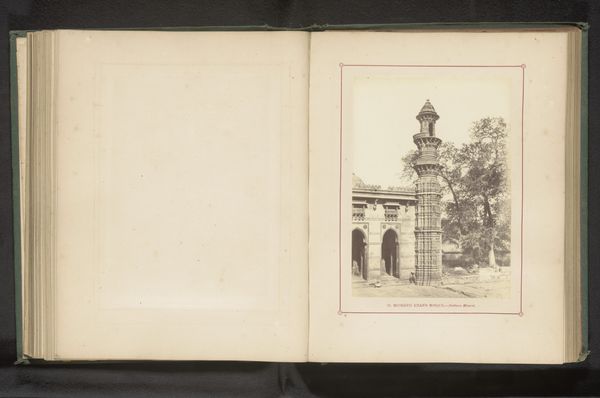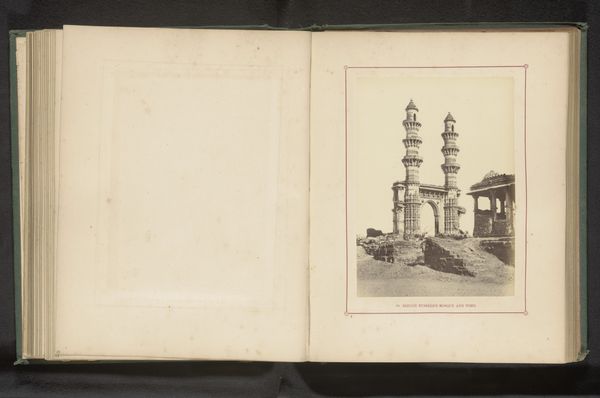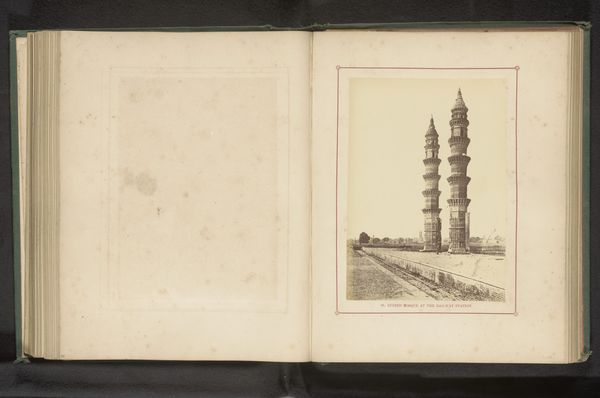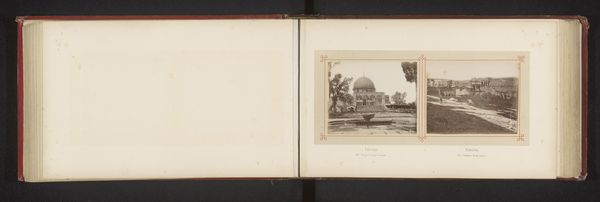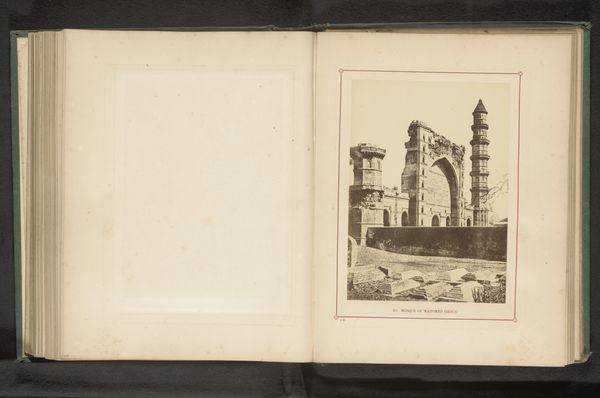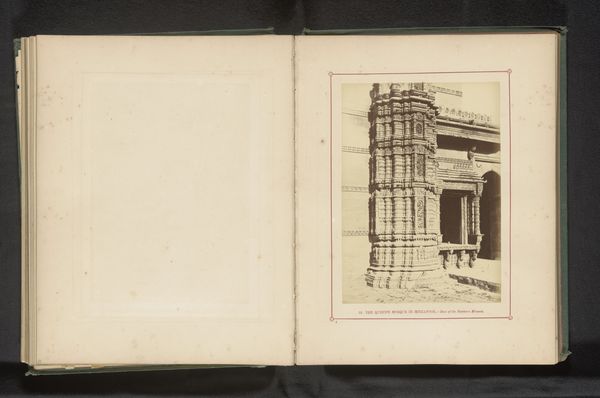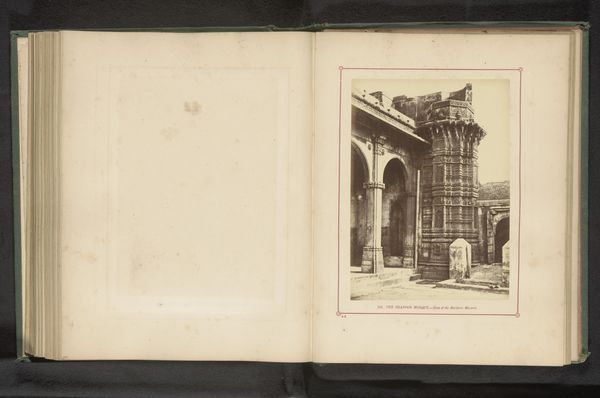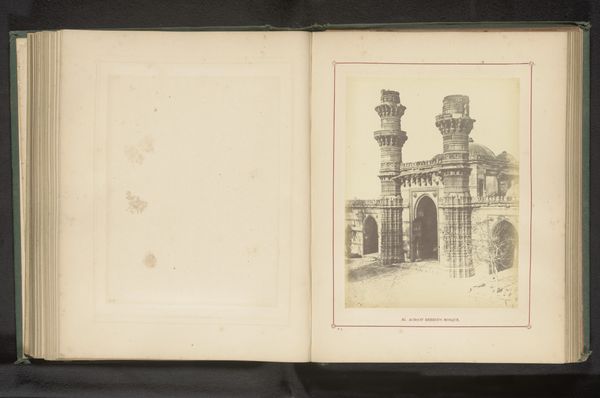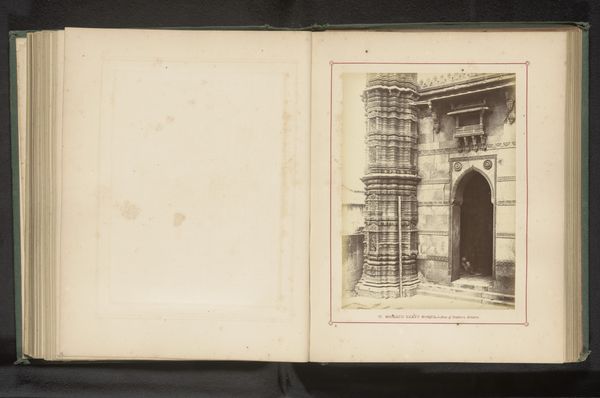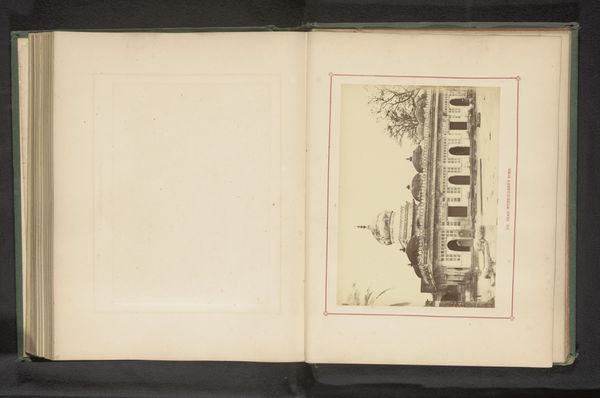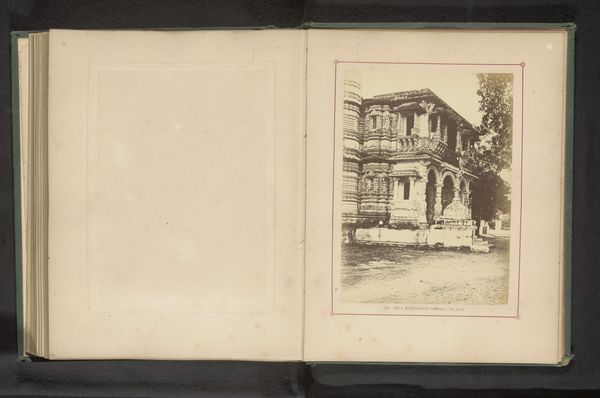
photography, albumen-print
#
landscape
#
photography
#
cityscape
#
islamic-art
#
albumen-print
Dimensions: height 189 mm, width 137 mm
Copyright: Rijks Museum: Open Domain
Editor: Here we have Thomas Biggs' albumen print, "View of a Minaret of the Mohammed Ghous Mosque in Ahmedabad," dating from before 1866. There’s a real sense of grandeur here, but also one of decay. What's your take on it? Curator: What I see immediately is how photography was being deployed within a colonial framework. British photographers like Biggs documented India, often reinforcing particular ideas about the landscape and its relationship to imperial power. The inclusion of architectural structures such as minarets presents specific power dynamics. Editor: Could you elaborate? Curator: Think about the audience for these images. They were primarily consumed in Europe, constructing an understanding of India through a Western lens. The focus on architectural ruins, such as the dilapidated sections beside the still-standing minaret, speaks to ideas of a past golden age, subtly implying a need for Western intervention. Who controlled the photographic process? Who had access to it? Editor: So, it's not just a neutral recording, but also a commentary? Curator: Precisely. Even the way the photograph is composed can be interpreted. The minaret, though imposing, is presented in the context of the overall architectural frame, possibly insinuating British surveillance of significant religious sites and therefore culture itself. What message does this kind of control convey, do you think? Editor: It's fascinating how much context shapes our understanding. I initially saw this as a beautiful architectural study, but now recognize this also reveals historical power relations and the photographer’s subtle political positioning. Curator: It underscores how art serves both aesthetic and socio-political functions. The dialogue about image control continues today.
Comments
No comments
Be the first to comment and join the conversation on the ultimate creative platform.
